The Shaping of Our Beanie Models
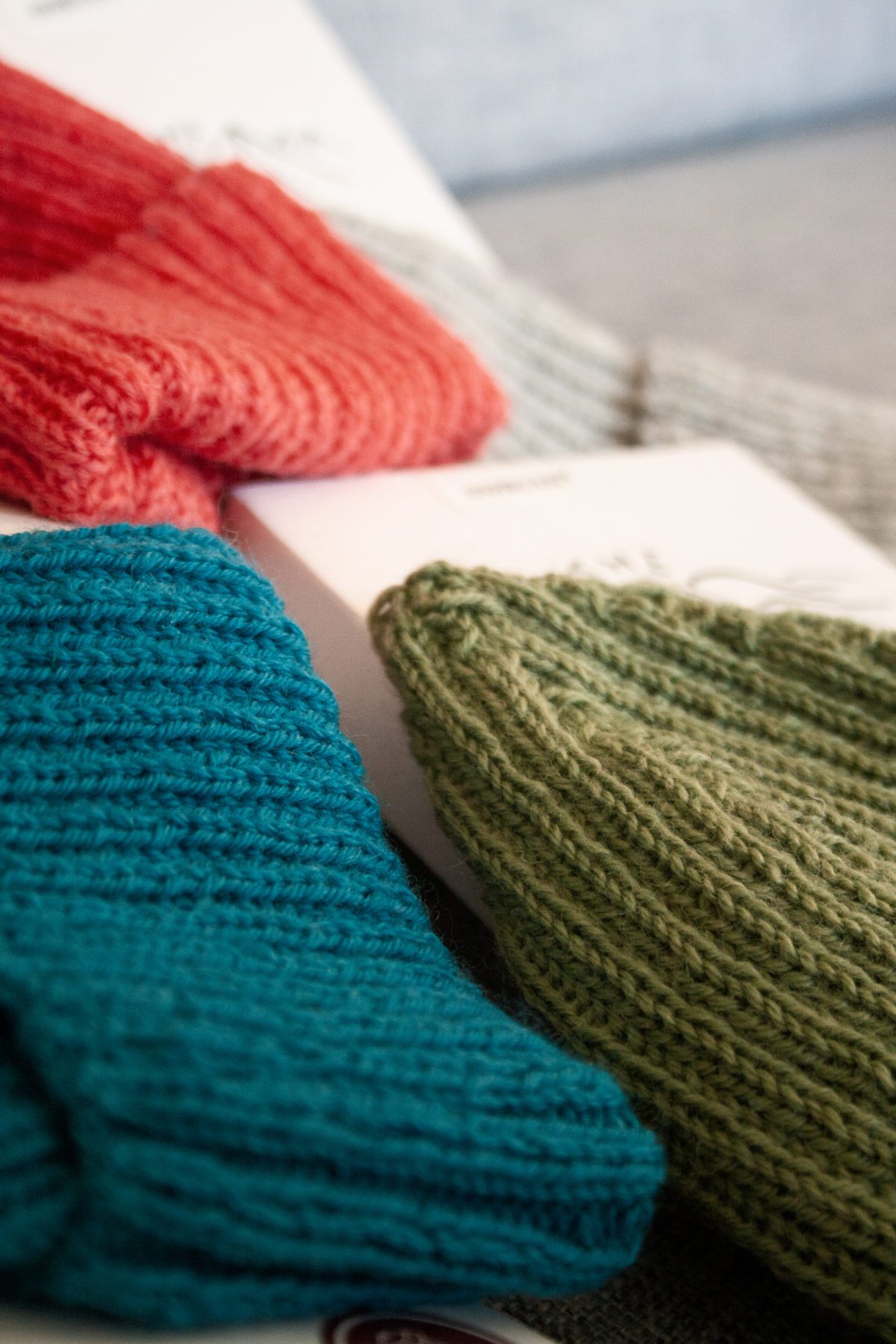
When we set out to design the first ever Red Hat Factory model, we didn’t go looking for the spectacular. Quite the contrary.
Looking at products and heritage items we consider absolute classics, we noticed one commonality. The classic yellow rain jacket, rough worn oak tables, faded leather belts, the knives that my dad has hanging on his wall, that we have used on all my childhood adventures — they all share one trait.
Simplicity.
From the outset, we knew we were making a product the old way — the way it’s been done from generation to generation. And wanting to also create a product that would be appreciated for generations, I let my mom take me back in time, showing me an array of basic simple knitting methods and their aesthetics.

Following the red thread
I’ve learned through both design and writing, that the creative process often starts with a more bloated product, and then is slimmed down through the cutting off of unnecessary features.
I am sure a lot of you can relate that to your own work. We often over-design — then cut back.
For the first Red Hat Factory cap, we went through 5–10 different models, and model by model we dropped things. First the unique knit pattern along the edge, then the shaped panels that gave an approximate head shape to the product.
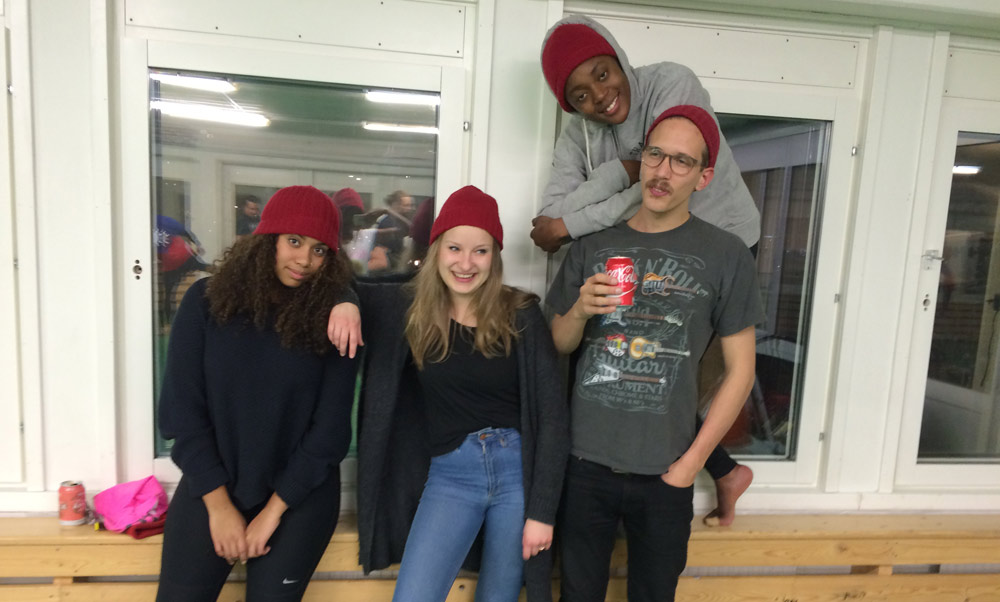
Finally, after hours upon hours of work, I dropped a final idea on my mother. “What if we just make the hat a tube, and let the owner shape it by wearing it.”
It sounds boring, but in all its simplicity, it actually worked best.
And the people loved it.
“The quality is amazing, and I know I’ll be able to use it for years to come!”
Morten Furre, Australia
“Fantastic quality, durable and stylish. Each Red Hat has been hand crafted with love and attention to detail.”
Greg Burkin, Canada

“[The Southlander] is by far my favorite – it’s quality top notch and unlike my other beanies it feels just perfect. Whether you’re dressed up and going out on the town or just heading to the store this is a must for any occasion.”
Nathan Pearson, USA
“I am using the Southlander pretty much every day.”
Asbjørn Østreim, Norway
“Like a good wine, this gets better with age.”
Billy Chester, USA
We knew we had hit something.
First model down
Finally the first of what was to become the Southlander was off the needles, knit using the technique called ribbestrikk in Norwegian, and sowed together in an x on the top. Nothing more nothing less.

The tube shape makes it look small when you get it, but once it’s had some time to shape itself to your head, it becomes better fitted to you than any pre-formed shape could bring.
Also, since the cap is a simple tube with no defined edge, you control how you fold it. We have another article that dives deeper into possible folding styles.
From fishermen to carpenters, the simple, yet gritty style of a workman’s beanie has been a hallmark of the hard working craftsman.
Simple is classic.
Simple hats, simple brand
When we first released the beanies to the webshop, the Southlander was simply named the Rounded. And paired with the simple design and the simple name, came a very simple sketched icon.

The whole brand was built and centered from the historic notion of the old beanie, knit by a wife before she sent her husband out on the sea to haul fish nets in the pouring rain.
While he is out fishing, the woman gets a business idea, and hastily she sketches down a few beanies with her pen. Then she sighs and peers out the window, wondering whether he will return today or not.
Little did that proverbial woman know she was planting the seed of Red Hat Factory to come.
That is the story behind the type of assets we use in the brand to this day. They have evolved a lot, but the style remains. Mom-made. Home made. Simple lines.
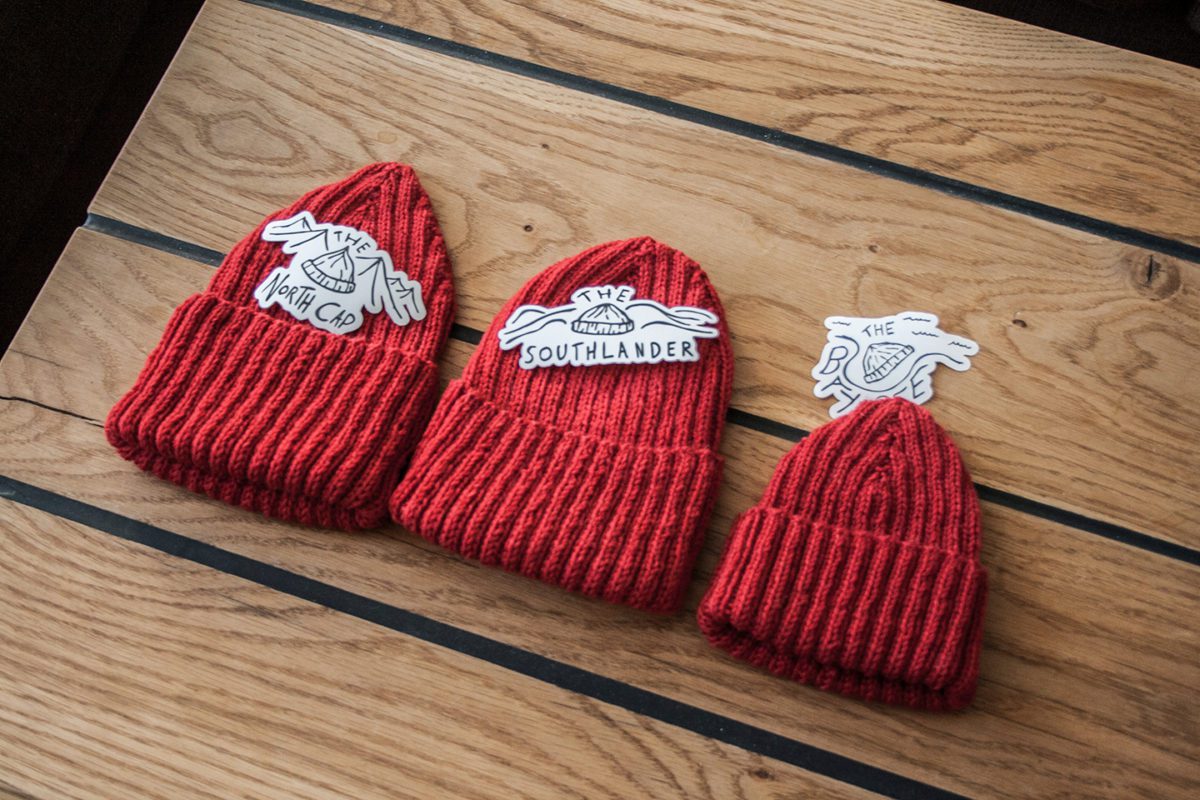
A Point to the Round
The North Cap was at first a failed attempt to cap off the beanie in a round fashion. It became pointier than it was supposed to.
When my quirky brother in law saw it, however, he loved it more than what I considered the final product. I soon realized we needed a second model. Based on the first, but with a touch of different, for the more explorative soul.
In line with the simple brand, we just named it the Pointy Tip.

Its base was, and still is, exactly the same as the Southlander, but it caps off in a peak rather than a half circle, making it the first choice of the ones who wants a basic cap, but with a slight edge to it.

It still is a classic though, and draws much of its inspiration back to the movie The Life Aquatic, which itself draws on the real life character Jacques Costeau.
Children Invade the Brand
A long time we only had two models, one color. And I refused every suggestion for additional colors and other products — very purposefully. I felt like if we were going to be the Red Hat Factory, we need to have at least a year, where we are just that — a factory of Red Hats.
As a side note, we aren’t really using a factory — it is true hand knit. But that is a different story.
The third beanie model, the Bay Bee, has a boringly simple history. When a friend, in our early days, asked if we had one for children, we said yes, and made a smaller version of the Southlander.
Not much more to say on that.

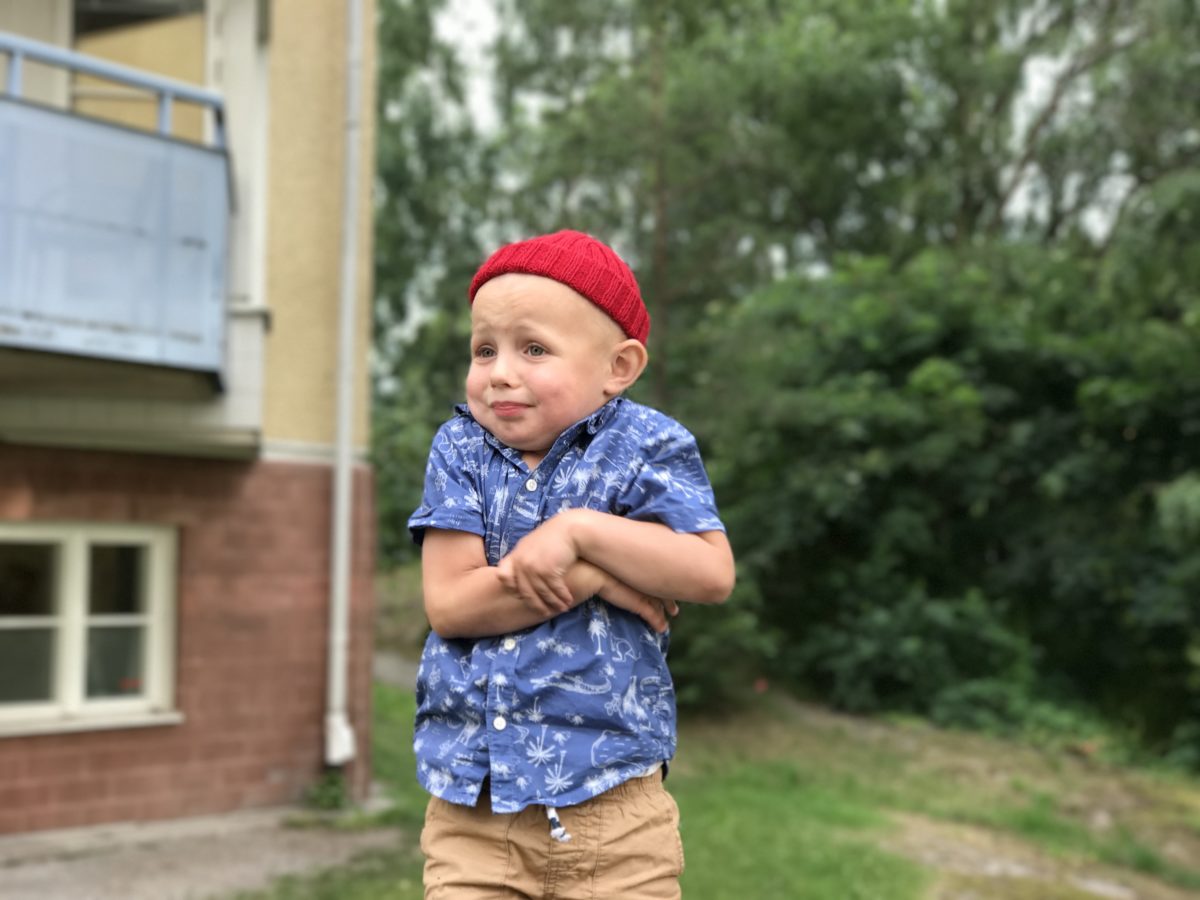
There is an interesting feature to the baby model, however. You know how I told you that the wool beanies are very small, and stretches a lot to fit your head. This is just how wool needs to be to properly fit you. On the Bay Bee, this makes the beanie fit from babyhood to 3-4 years old, but look very different at each stage.
You can see we stuck with the simple names, but you’ll notice, the following drawing is a little more polished around the edges than its predecessors. This actually inspired me to rebrand and rename all the beanies in turn.

Talking of that stretchiness
Most our customers express surprise when they see the size of the new beanie. It is small.
Your average cotton beanie doesn’t stretch a lot, so what you see is what you get. A wollen knit cap will grow with you, and take its shape from your head. In the beginning, the hat can even be a bit slippy for some people, especially when your hair is newly shampooed.
Like a good pair of selvedge jeans, or a new set of leather boots, it needs to be worn in. After that, it will be your most trusty friend.
No brand for a reason
Many also express surprise at the lack of any brand assets on the cap. You get a Certificate of Authenticity upon purchase, and there will be stickers in the box — but the beanie itself is completely bare.
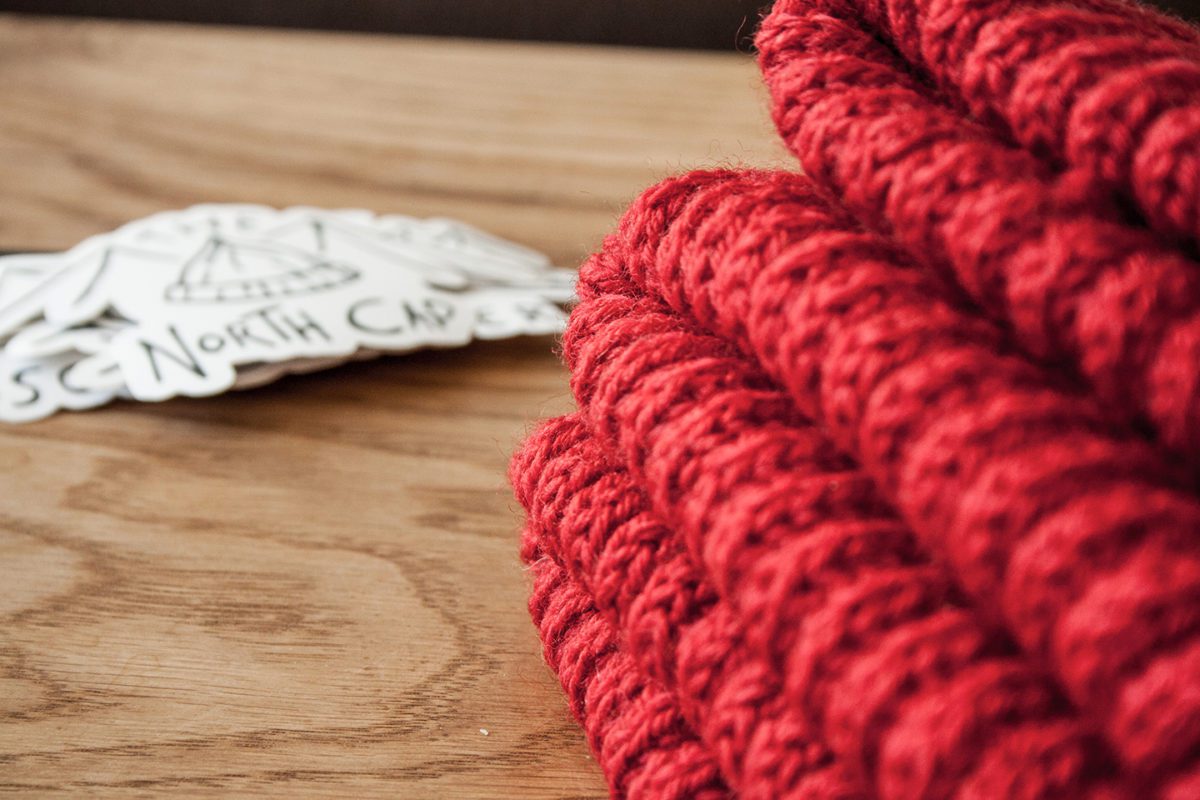
We chose this because of the history of the brand. Taking the experience of growing up with a knitting mother and bringing it to you. When she knit me a piece, there was no brand. It was pure, just a gift of love from a parent to a child, and therefore we keep the beanies pure.
Washing instructions are found on the web.
With the lack of brand, the texture of the beanie needs to stand out even more, and so it does. We chose wool partly for its features (isolates even when wet), but also a lot because of its look. Gritty and rough, connecting you with the hard worker on the seas a hundred years ago, the construction workers balancing the beams of Empire State Building when it came up, and the kind hands that knit it — stitch by stitch, with care.